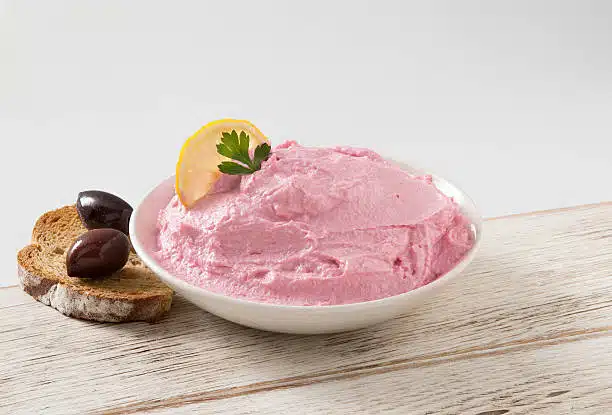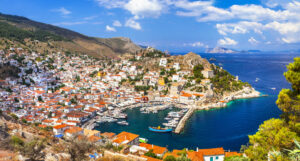
“Tarama, this creamy preparation made from fish eggs, is a real invitation to a culinary journey.”
Tarama is much more than a simple preparation of fish roe. It embodies the essence of marine flavors and Mediterranean culinary art. Find out all you need to know about tarama, from its origins to its many uses in cooking, not forgetting its health benefits.
How to choose a good tarama?
When choosing the ideal tarama, opt for quality artisanal products. Fresh fish roe, such as cod or codfish roe, guarantees authentic flavor. The color, naturally pale pink or beige, can vary according to the ingredients used. However, avoid overly bright hues, often caused by artificial colorants.
A smooth, creamy texture is also a good indicator. Check the list of ingredients: a good tarama should contain fish roe, quality olive oil and natural herbs. Finally, taste it. The best tarama balances saltiness and creaminess, without excess fat or unpleasant aftertaste.

What are the nutritional contributions?
Tarama is an excellent source of omega-3 fatty acids, which support cardiovascular health and reduce inflammation. These essential fatty acids also support cognitive function. In addition to omega-3s, tarama contains high-quality proteins, ideal for strengthening muscles and repairing tissues.
This dish is rich in vitamins B12 and D, essential for energy metabolism and bone health. Minerals such as iodine and phosphorus play a crucial role in thyroid function. However, its salt content requires moderate consumption. To maximize its benefits, combine it with raw vegetables rich in fiber, which complement its nutritional qualities.
How to consume tarama?
Tarama is traditionally served as an aperitif, spread on toast or blinis. For a lighter version, serve with carrot or cucumber sticks. A few lemon zests or sprigs of fresh chives further enhance its flavor.
For more elaborate dishes, use tarama in verrines, dips or sauces to accompany seafood. Chefs like to use it as a garnish for canapés or smoked salmon rolls. To enhance its flavor, add a drizzle of extra virgin olive oil and a few black peppercorns.
History and Origins of Tarama
Tarama has its origins in Greek and Turkish cuisine, where it is often served as an accompaniment to celebrations. As far back as ancient Greece, fish roe was considered a refined delicacy. Over the centuries, tarama has become a staple on Mediterranean tables.
Particularly appreciated during Orthodox Lent, it represents a tasty alternative to meat products. Today, it perfectly illustrates the simplicity and generosity of Mediterranean cuisine. Each region has adapted this emblematic recipe to its own traditions, reflecting the culinary diversity of these cultures.

Variants of the Tarama
Many variations of tarama exist, reflecting the creativity of local cuisines. In Greece, tarama is often prepared simply, with a delicate flavor. In France, on the other hand, natural colorants give tarama a more pronounced pink hue.
Some recipes include herbs such as dill or parsley, while others add citrus zest for a tangy note. In modern versions, truffle infusions or spices add an innovative touch. These variations enrich the taste experience, making tarama even more versatile.
Tarama in the Modern Kitchen
In contemporary cuisine, tarama inspires innovative creations. Chefs incorporate it into fusion dishes such as sushi or gourmet tartines. It can also be used as a base for fish mousses or creamy sauces.
Its creamy texture and pronounced flavor add a touch of elegance to preparations. For example, it can be used as a stuffing for vegetables or as a topping for gourmet pizzas. In the kitchen, tarama transcends its traditional role to become a must-have ingredient for modern tables.
Pairings and Sides
To enhance tarama, choose the right accompaniments. Blinis and toast remain the classics, but vegetable potato chips or rye crackers offer interesting alternatives.
As for beverages, a dry white wine like a Greek Assyrtiko or Sauvignon Blanc perfectly balances its rich flavors. For a refreshing touch, pair with raw vegetables such as radishes or celery sticks. These pairings enhance the tarama while enriching the culinary experience.
| Greek Recipes | Greece | Greek Products | Producers and Artisans | Must-See in Greece | Greek Salt | Santorini | Spanakopita Recipe | Greek Soap | Kastellorizo | Souvlaki Recipe | Greek Bronze | Feta Che ese La Tapenade | Chania | Taramasalata recipe | Ouzo | Corfu |




